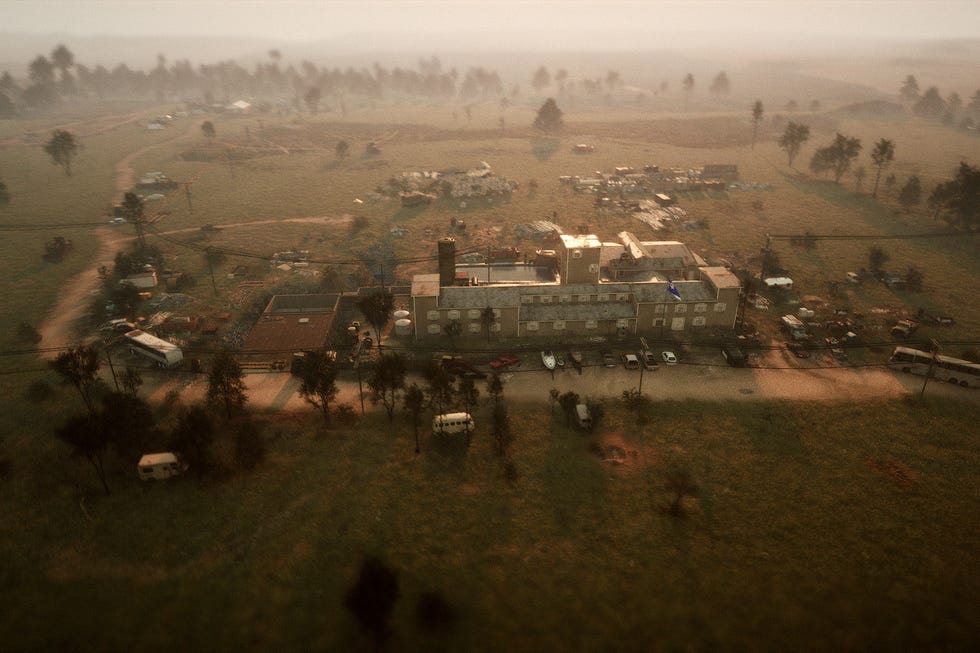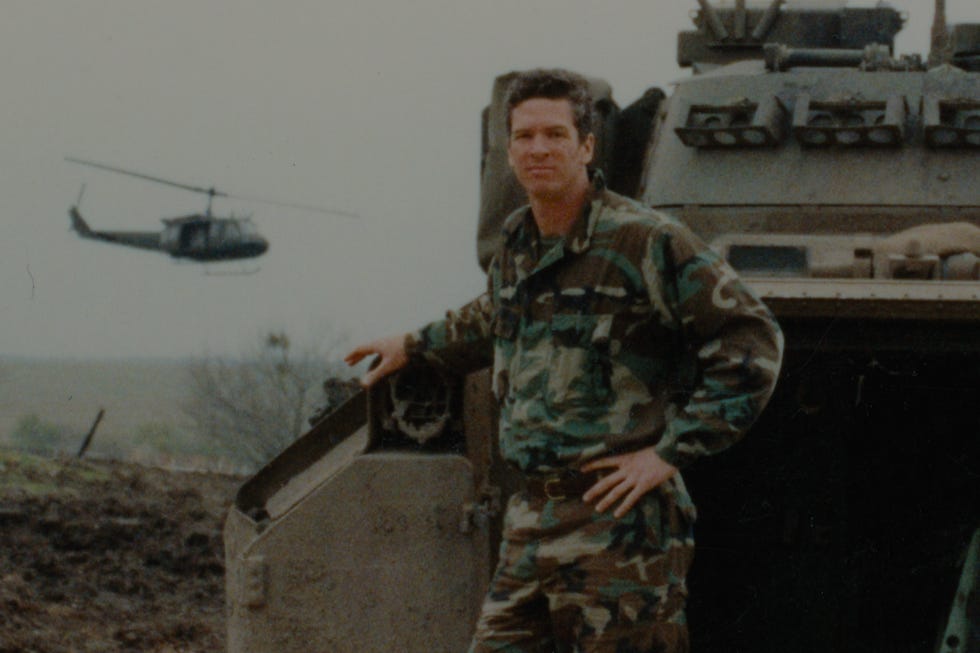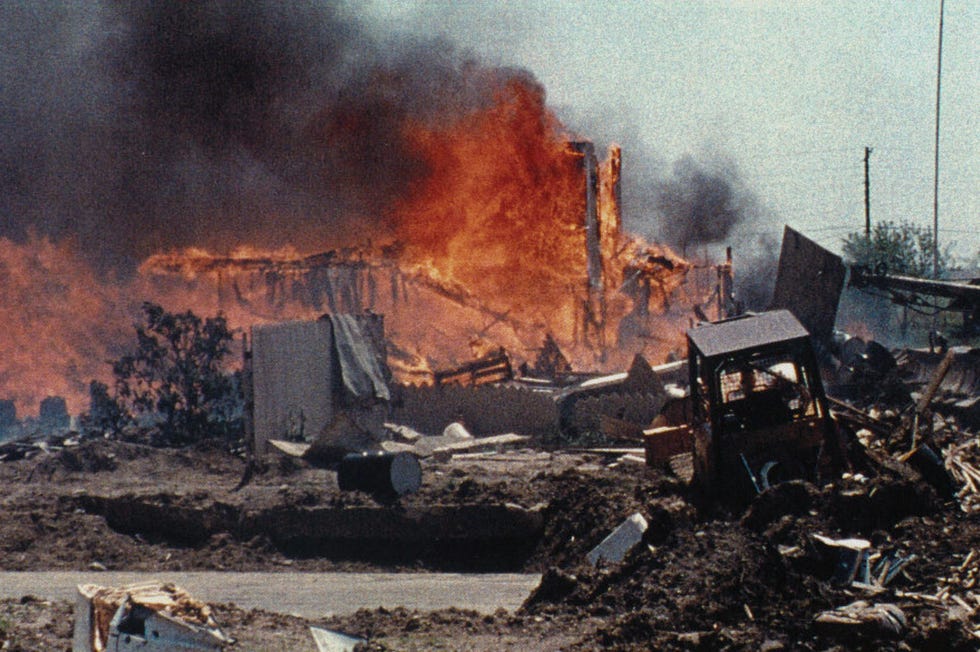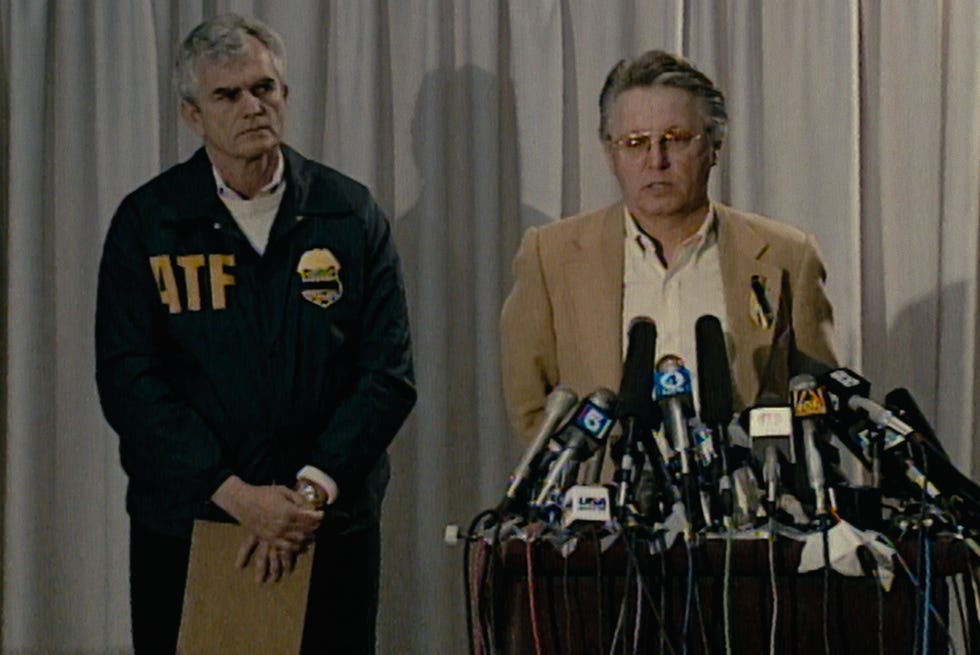WHETHER YOU were cognizant of the news back in 1993, your understanding of the horrible Waco siege 30 years ago that resulted in the deaths of 86 people may be hazy. The standoff-gone-wrong between U.S. authorities and the extremely armed Branch Davidian religious sect became a media frenzy and a political and cultural lightning rod—one whose symbolism seemed to subsume the actual events that took place.
So what was “Waco,” as we’ve come to know it, and how did the massacre unfold? The new three-part Netflix docuseries Waco: American Apocalypse, out on the streamer March 22, attempts to answer those very questions.
Directed by Tiller Russell (Night Stalker: The Hunt for a Serial Killer), the series uses never-before-seen footage from the siege as well as CGI visualizations to pick apart what actually happened leading up to and during the bloody onslaught, from the point of view of both federal officials and Branch Davidian members. But what information about the Waco siege do you need to know to fully grasp Netflix’s Waco doc? We have an explainer right here.
What was the Waco tragedy everyone talks about?
Technically, it wasn’t any one event so much as a series of events: Widely known as the Waco siege, or the Waco massacre, both terms with somewhat loaded political subtext (more on that later), it was a standoff lasting 51 days between the Branch Davidian fringe religious group (or movement, or cult, again depending on your perspective) and U.S. federal law enforcement. The Branch Davidians comprised a group of about 130 men, women, and children living on a compound called the Mount Carmel Center outside Waco, Texas. The sect was led by David Koresh. Charismatic and convincing, Koresh served as the messiah figure of the group, who members believed could save them when the impending apocalypse hit—and when the Branch Davidians foresaw themselves in a fight to the death with the government.
“They think I’m the son of God,” Koresh is seen telling a reporter of his followers in footage from the time that Netflix’s doc incorporates into its narrative.
This content is imported from youTube. You may be able to find the same content in another format, or you may be able to find more information, at their web site.
More ominously, in audio, when asked if he puts his trust in the Lord, Koresh simply answers: “I am the Lord.”
How did the siege start?
Koresh and his disciples took it upon themselves to arm their compound with a wildly large array of guns, including converted automatic assault rifles, and ammunition and grenades—most of which were illegal—Netflix’s Tudum notes.
And so in turn, the U.S. Bureau of Alcohol, Tobacco, Firearms, and Explosives (ATF) obtained a warrant for Koresh’s arrest.
The “opening volley” of the Waco siege, as Texas Monthly puts it, occurred on February 28, 1993. While law enforcement tried to apprehend Koresh, gunfire was exchanged between feds and the Branch Davidians.
The failed operation then stretched across multiple weeks, with a wounded Korean and many followers refusing to surrender. Dovetailing with the rise of always-on cable news, the seemingly made-for-TV sensation was recorded at nearly every moment from both inside and outside the compound.
How did it end?
The siege continued until finally, on April 19, 1993, a fire that engulfed the Branch Davidians’ compound brought a grave end to the matter. Both sides suffered casualties. Only nine people inside the complex survived. The death toll included 28 children. Koresh was one of several Branch Davidians who died of a gunshot.
But that wasn’t all. The aftermath of the Waco tragedy left some certain that the Branch Davidian sect was nothing more than a nutty cult that had more or less invited hell upon themselves. Others, however, highlighted the ineptitude, even alleged carelessness and callousness, of federal authorities who, critics argued, could and should have quelled the disaster sooner, with fewer deaths.
So the legacy of Waco? Yeah, it’s complicated.
Certain Branch Davidian survivors have expressed frustration with mainstream accounts of the siege, trying to claim their agency, as Vox notes in its explainer. In the book A Place Called Waco: A Survivor’s Story, author David Thibodeau (and one of the nine Branch Davidians to survive the fire) writes: “So many of the Davidians have been demonized by the media … I felt it my duty to tell the true story of a group of people who were trying to live according to their religious beliefs and the teachings of a man they all considered divinely inspired.”
Other questions about who deserves blame for which deaths have never been entirely settled to everyone’s satisfaction (for one, it’s not clear who shot Koresh). Calling what transpired a “siege” may suggest that law enforcement was in the right, while “massacre” underlines the deaths of innocents. But any way you spin it, Waco was a catastrophe.
How does Netflix’s Waco: American Apocalypse make sense of what happened?
Netflix’s Waco splices together an impressive trove of footage. It includes talking-head interviews today with people from all sides of the conflict, including one of Koresh’s “spiritual wives” and members of the ATF tactical team, who saw colleagues fall to the carnage.
Plus, it plumbs the depths of rare archival footage, including Koresh’s videos, which he taped while wounded with a camera provided to him by the FBI, as well as insider recordings from law enforcement.
If there’s a flaw in Waco: American Apocalypse, it’s that it rehashes the same tale that gripped television viewers in the ‘90s, without finding much new meaning. But its strength is at least providing some coherence, even clarity, to the unprecedented mayhem.

Paul Schrodt is a freelance writer and editor who also contributes to Esquire, GQ, Money, The Wall Street Journal, and more.








Comments are closed.